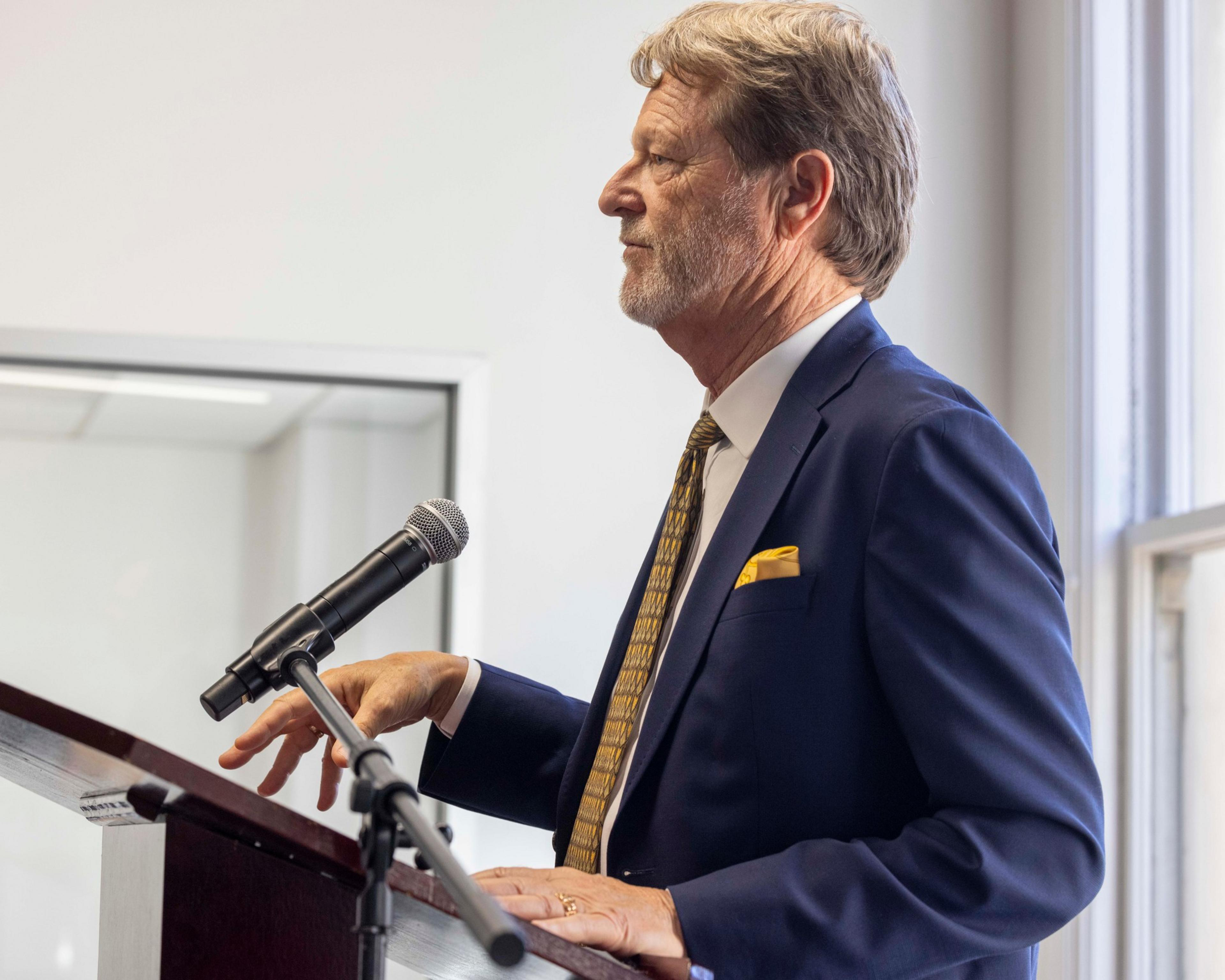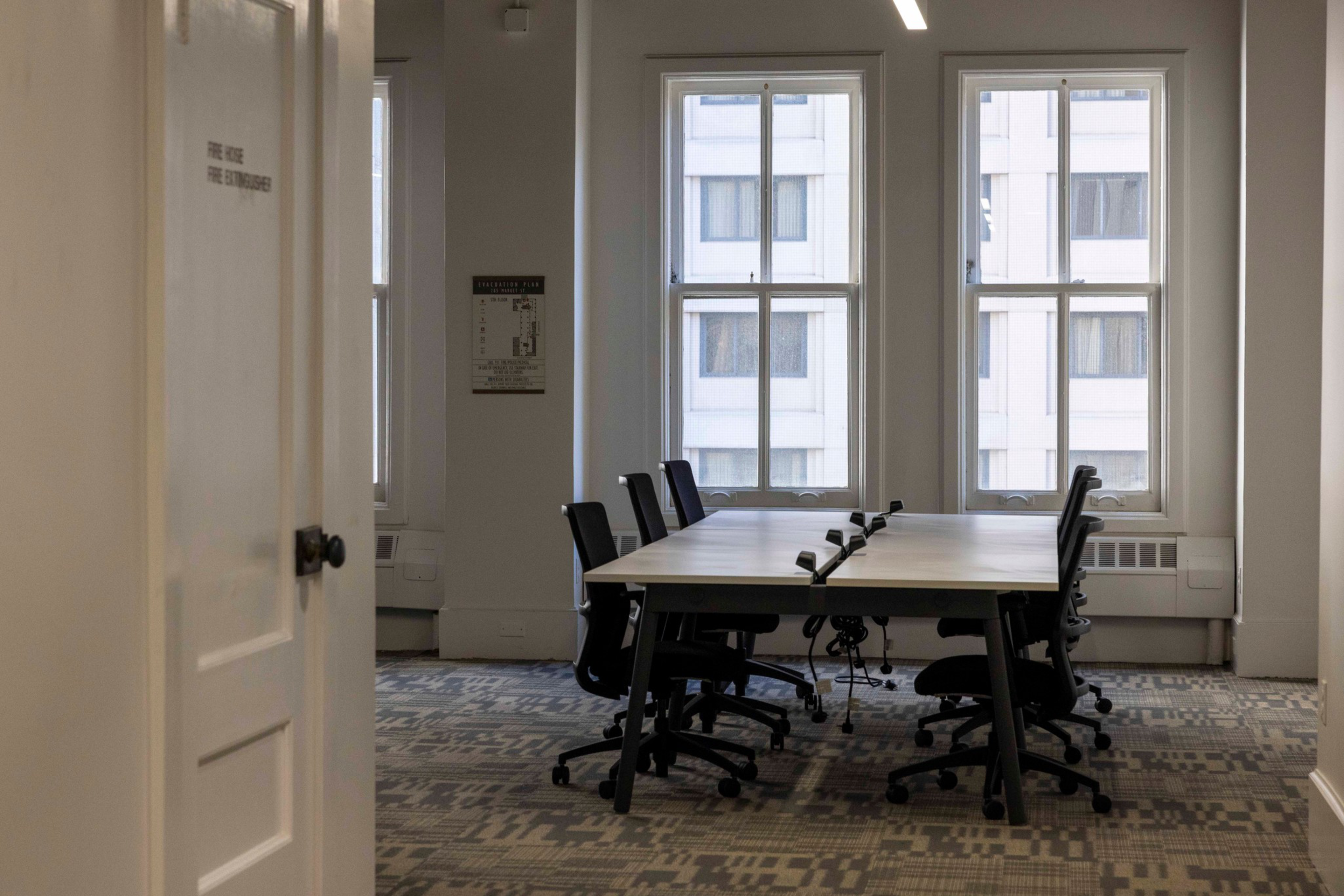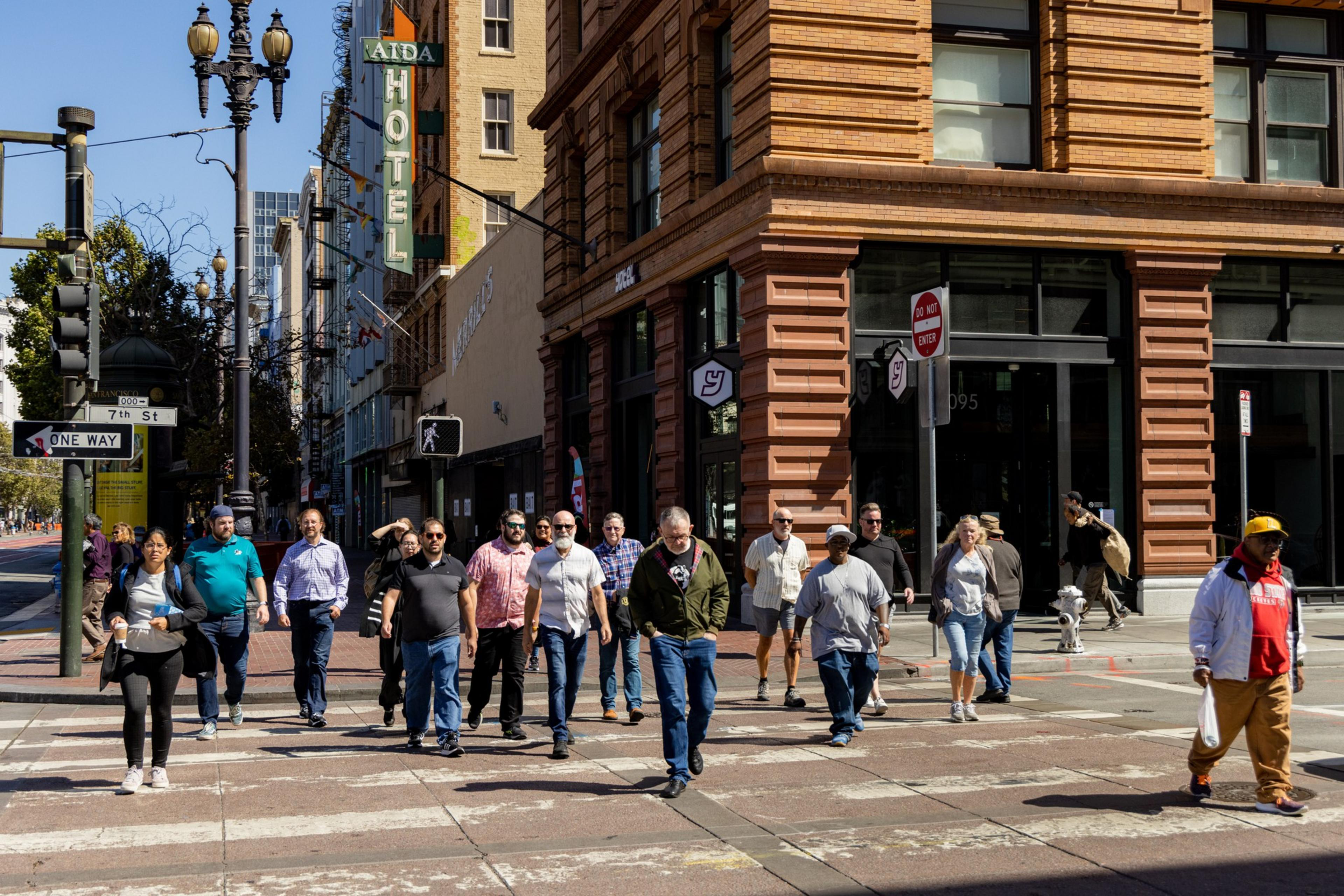On the fifth floor of the Humboldt Bank Building on Market Street, flanked by a jazz band and an elaborate charcuterie spread, Richard Hannum of Forge Development Partners boldly declared an “End of the Depression” party.
The San Francisco developer and architect announced to a gathering of city officials and real estate honchos that, after months of frustration, his firm had secured the funding and approvals needed to embark on what would be the first office-to-housing conversion since the pandemic.
Forge found the right property; convinced the owner to act; and, most important, cobbled together the money to pay for construction. The irony: With all the public conversation around conversions and policies enacted to enable them, it took four years to start the process of putting 120 units in a historic tower primed for transformation.
San Franciscans, Hannum said, “have made the necessary shifts to reimagine downtown. But the rest of the world was still not with us.”


Unable to secure conventional loans, Hannum pivoted to pursuing investors that would actually fund the project in the current economic climate: government agencies.
A traditional investment group would have included a couple of partners, mainly banks and fund managers, Hannum told The Standard. But for the Humboldt conversion, they included the U.S. Department of Energy (opens in new tab), Department of Housing and Urban Development (opens in new tab), and Environmental Protection Agency (opens in new tab).
Under the Biden administration, these agencies offer grants or financing to incentivize clean-energy development. Additionally, Forge found climate-motivated investors in Europe who were willing to chip in.
“It was like searching through all of Jumanji,” Hannum said of the yearlong process of raising money for the project at 785 Market St.
In order to qualify for those opportunities, the team at Forge had to design the conversion so it wouldn’t consume more energy or emit more carbon. Constructing something entirely new — which involves excavation and massive shipments of raw materials — would have taken those financing deals off of the table, Hannum said.
The Humboldt’s 116-year old design worked in the team’s favor. Its original underground steam infrastructure can still be used to power the building, while solar upgrades will supply the rest of the electricity.
With its clean energy credentials in hand, Forge has the financing to start transforming the offices into apartments for middle-income earners early next year, Hannum said.

Demand for office-to-housing conversions has emerged as a priority for voters and officials as the city’s commercial vacancy rates soared in the aftermath of the pandemic. But none have gotten underway due to harsh economic conditions and a limited number of viable buildings.
Government officials have been trying to change the equation. In the past year, San Francisco has passed transfer tax cuts, rezoned blocks, and rolled back fees and affordable housing requirements in an effort to grease the wheels. Last week, Gov. Gavin Newsom signed Assemblymember Phil Ting’s AB 2488 (opens in new tab), which will allow San Francisco to establish a special financing district to support conversion projects downtown.
“If I had it my way, I’d put our entire city charter into ChatGPT and have it spit out something much better,” Mayor London Breed said to applause at the Forge ceremony. Last week, she and Supervisor Matt Dorsey introduced their own rollback of fees specifically for downtown office conversions.

Hannum’s original plan was to purchase the building from the Seligman Group, the real estate firm of San Francisco Giants minority owner Scott Seligman. But Seligman instead ended up as an investor, saving the development team the time and money of bringing in a new capital partner.
The Humboldt Bank Building is half vacant, with a smattering of small office tenants and a Men’s Wearhouse store on the ground floor. Hannum said Forge will redevelop the empty floors first and expand as tenants phase out. Since only floors 3 to 14 are being converted, the building will retain a mix of commercial tenants at the end of the process.
The small floor plates and abundance of windows make the building a seamless fit to transition into apartments, Hannum said. The kind of open-floor, glass-encased office towers that dominate the city’s skyline are much more complicated to convert, since residential units require different plumbing and emergency exit designs.
The conversion of the Humboldt building is the latest in a series of workforce-focused developments Forge has pitched around the city. In 2022, the firm opened two “group housing” apartment buildings, at 361 Turk St. and 145 Leavenworth St. in the Tenderloin, where renters pay between $1,800 to $2,700 a month for micro apartments and share communal spaces.

“Investors love the middle-income pitch,” Hannum said. “It’s a cause they can get behind, and you can get [the projects] to pencil out if you put the right legislation in place.”
What’s next? Hannum said his firm is eyeing another conversion on the 900 block of Market Street and is forging ahead on a long-gestating redevelopment of the Fifth Church of Christ, Scientist, property at 450 O’Farrell St.
“A sequence of things had to fall into place for [the Humboldt conversion] to happen,” Hannum said. “We now have a pattern language that others can duplicate.”

